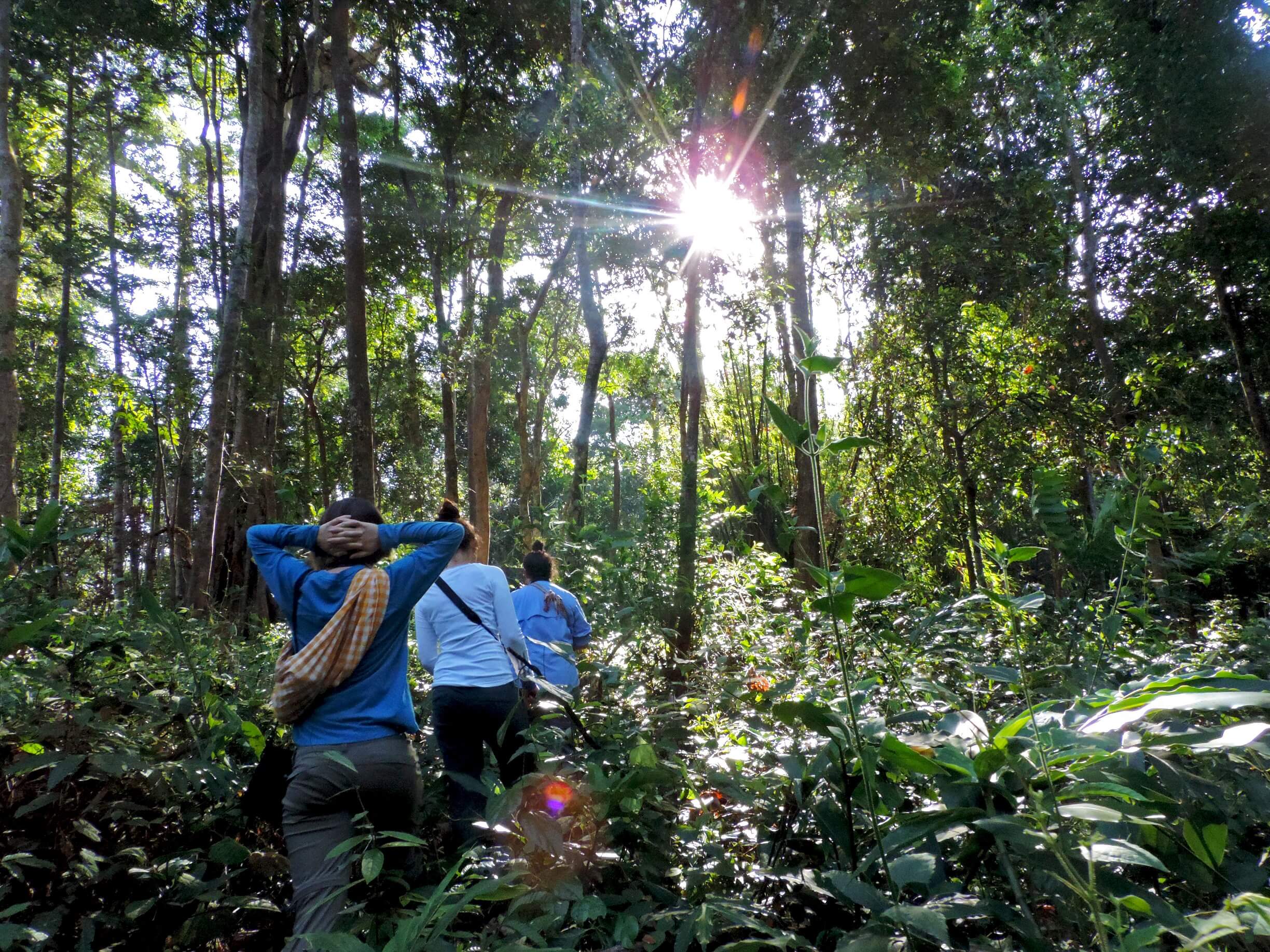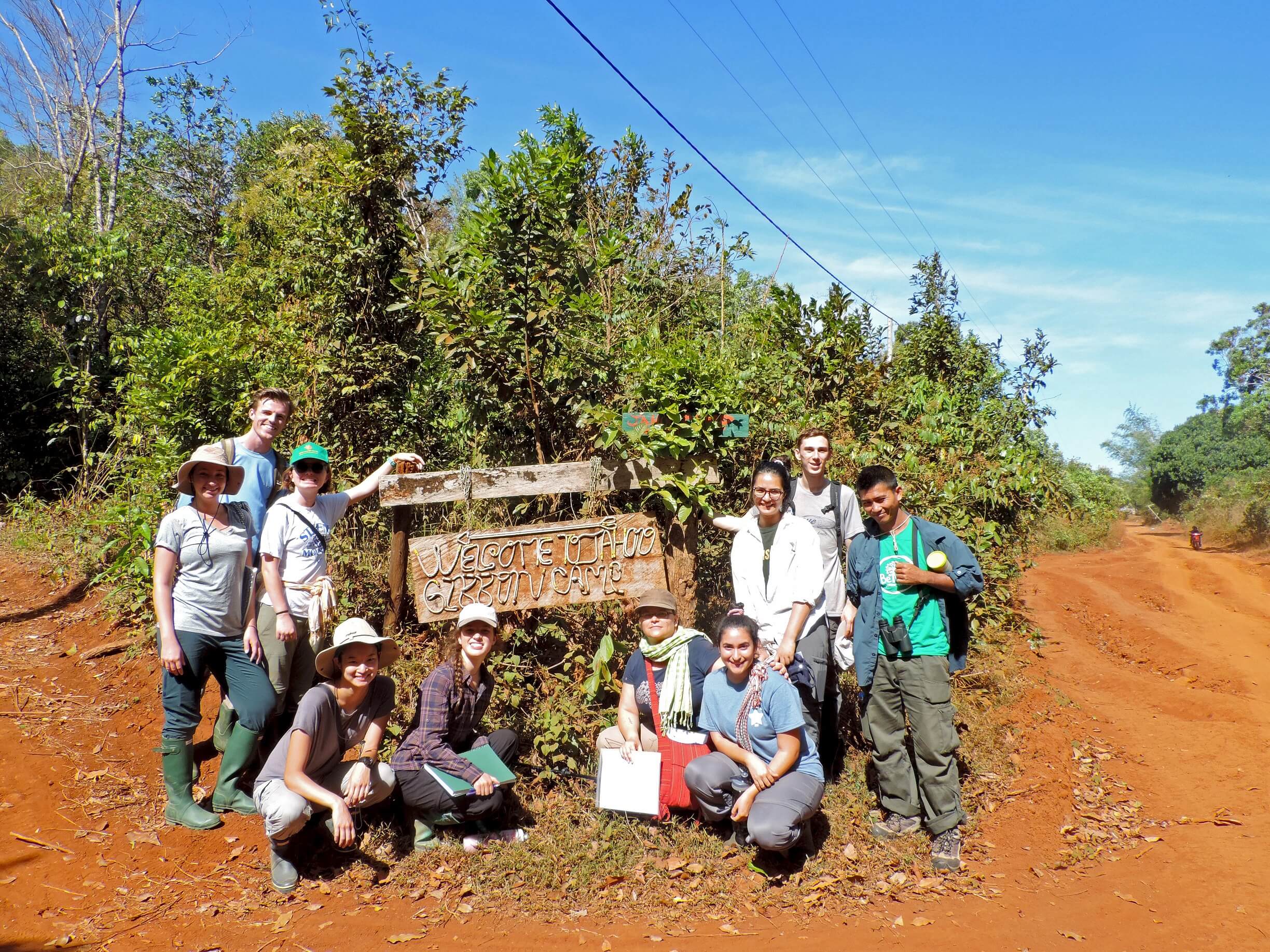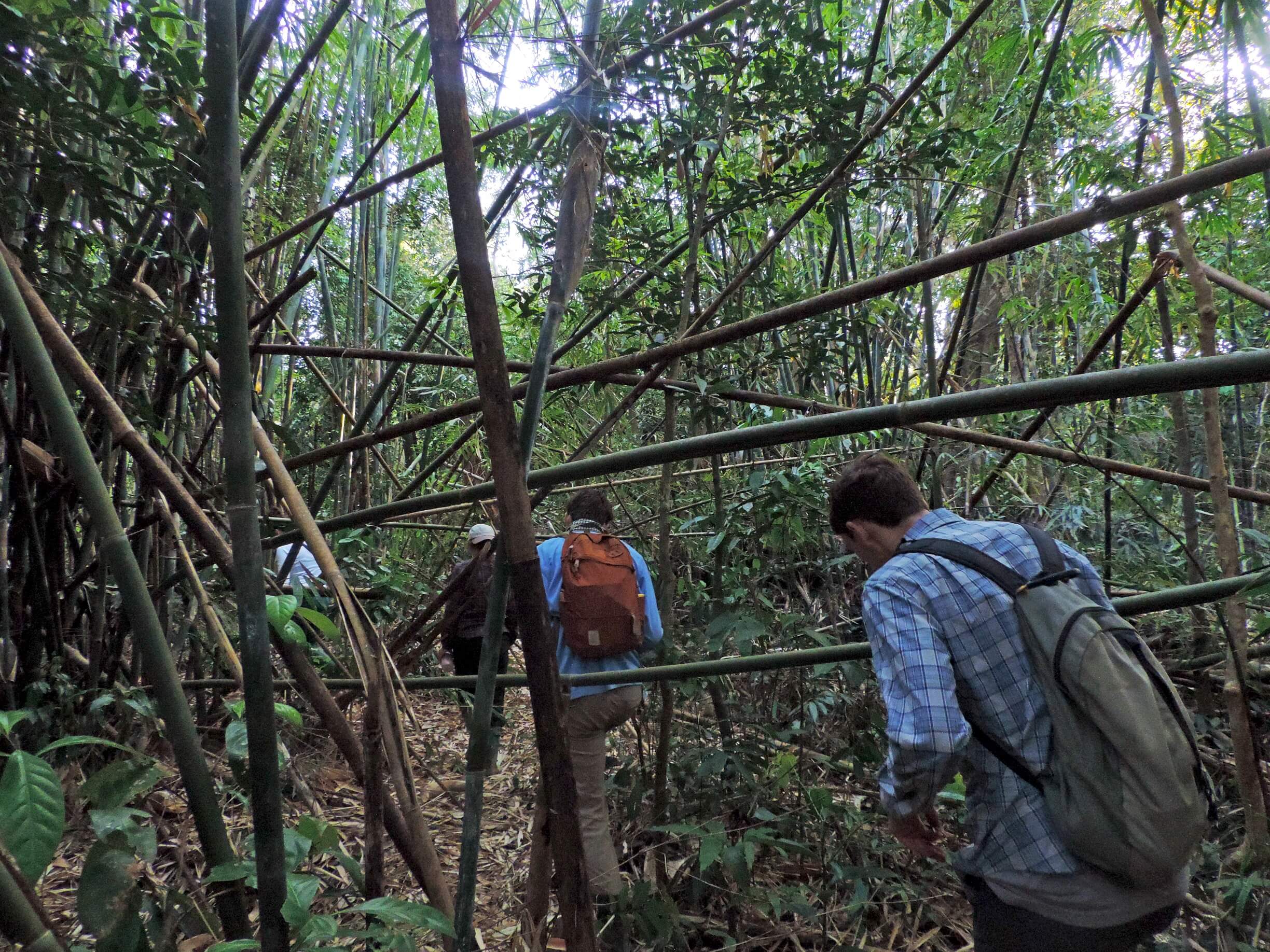Gibbons, Langurs, and Folktales
Giving the results of research back to our local partners is always a pleasure. All of the research we conduct at SFS Cambodia is designed to assist our various partner institutions. Some projects need longitudinal data sets, data gathered painstakingly student by student, crossing the rainy season and the dry, in order to assemble enough data to observe patterns and trends. But sometimes, a single project may yield data that can be usefully offered back, and that was the case this February in Cambodia.
One of the sites we take students to is Jahoo Gibbon Camp, a small community-based ecotourism project managed by the indigenous Bunong village of Andong Kralong. The camp is nestled in an abandoned orchard on the edge of the village, deep in Keo Seima Wildlife Sanctuary in eastern Cambodia. Established with assistance from the conservation organization Wildlife Conservation Society, the project seeks to offer alternative livelihoods for some villagers and to ensure that the village as a whole receives direct benefits from ecotourism. Local forest guides, cooks, cleaners and security guards directly benefit from visitors to the site, and each guest must donate into a community fund. The members of community-based ecotourism projects often struggle with communicating with their visitors across linguistic and cultural barriers. Visitors to the Gibbon Camp usually come with an English-speaking guide, but the lush forest and the rare primates are usually the main topics of conversation.


It is always a delight to accompany students to this beautiful forest and to steal out before dawn to seek out the primates. However, sometimes, even in the perfect habitat, the creatures elude us. After a windy night and a windy morning, the first day’s students did not encounter primates, although the gibbons’ mournful rising and falling duets rang through the trees. Our second student group, however, spotted both black-shanked duc langurs (Pygathrix nigripes) and yellow-cheeked crested gibbons (Nomascus gabriellae), stirring themselves in the rising sun. In addition to experiencing this ecotourism initiative, however, this time SFS Cambodia had a gift to give the community.
Last semester four students had the privilege of conducting their field research in Andong Kralong village, and one project was designed to benefit the Jahoo Gibbon Camp. Two students set about documenting and recording traditional folktales from the village elders. To gather these folktales students engaged in a complicated three-way translation process, from English to Khmer to Bunong and back again. When we returned with this semester’s students to the Jahoo Gibbon Camp two weeks ago, we took a booklet with an English version of these folktales for international guests. Our hope is that the folktales will allow visitors to the project to appreciate a small bit of the cultural heritage of the Bunong as well as the unique primates they live alongside.


Related Posts

Restoration on a Cinder Cone: A Syntropic Story

